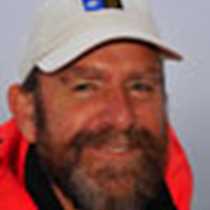Torshavn, Faeroes
We tied up alongside in the tiny capital of Torshavn last night, allowing a dance troupe to come on board and treat us to the Chain dance. In vivid blue, green and red traditional woolen costumes, they joined hands and surged to and fro, chanting complex verses in Faeroese. They are the last people to retain this relic from Norse ancestry. Island states are easily conquered and too often smothered by mainland culture. Faeroes, under a Danish yoke for centuries, has only recently been allowed to express its own identity. Its unique language, sculpted like the landscape by isolation and the elements, has survived, braided through repetition into a sturdy lifeline to the past.
Many went to sea this morning to fish: the rest went to town to explore the shops, harbour and ancient turf-roofed heart of the settlement. In the harbour, beautiful wooden boats bobbed at anchor, their curling stems and sterns proudly proclaiming their Viking ancestry. Past the statue of Nólsoyar Poul: above this heroic Faeroes figure a bronze oystercatcher swoops bravely down upon the mighty raven, symbolising the locals' determination to challenge the monopoly of Danish traders. From here we climbed between the wooden houses to a stand of pines and sycamore: trees! We have almost forgotten what they look like. At the Natural History Museum Dorete Bloch, the curator, opened specially for us, and we wandered among weird fishes, varied rocks, whale skeletons, pied raven and great auk specimens that illustrate the islands' wildlife.
The last diehard nomads trekked out of town, up rocky ridges where whimbrel and golden plover called, past the ancient Speakers Rock where locals met to proclaim their island identity. Finally we gazed out upon the dramatic islands of Hestur and Koltur, the horse and the colt. We basked in our righteousness; for verily the sun shone upon us.
And so we turn south, as smug a crew of Vikings as ever plied the briny main, our ship full of plunder, the galley revittled with cod; truly our memory cards runneth over.
We tied up alongside in the tiny capital of Torshavn last night, allowing a dance troupe to come on board and treat us to the Chain dance. In vivid blue, green and red traditional woolen costumes, they joined hands and surged to and fro, chanting complex verses in Faeroese. They are the last people to retain this relic from Norse ancestry. Island states are easily conquered and too often smothered by mainland culture. Faeroes, under a Danish yoke for centuries, has only recently been allowed to express its own identity. Its unique language, sculpted like the landscape by isolation and the elements, has survived, braided through repetition into a sturdy lifeline to the past.
Many went to sea this morning to fish: the rest went to town to explore the shops, harbour and ancient turf-roofed heart of the settlement. In the harbour, beautiful wooden boats bobbed at anchor, their curling stems and sterns proudly proclaiming their Viking ancestry. Past the statue of Nólsoyar Poul: above this heroic Faeroes figure a bronze oystercatcher swoops bravely down upon the mighty raven, symbolising the locals' determination to challenge the monopoly of Danish traders. From here we climbed between the wooden houses to a stand of pines and sycamore: trees! We have almost forgotten what they look like. At the Natural History Museum Dorete Bloch, the curator, opened specially for us, and we wandered among weird fishes, varied rocks, whale skeletons, pied raven and great auk specimens that illustrate the islands' wildlife.
The last diehard nomads trekked out of town, up rocky ridges where whimbrel and golden plover called, past the ancient Speakers Rock where locals met to proclaim their island identity. Finally we gazed out upon the dramatic islands of Hestur and Koltur, the horse and the colt. We basked in our righteousness; for verily the sun shone upon us.
And so we turn south, as smug a crew of Vikings as ever plied the briny main, our ship full of plunder, the galley revittled with cod; truly our memory cards runneth over.



